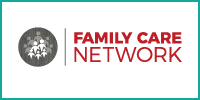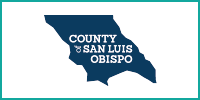Know the difference between a WANT and a NEED
A Need: an essential item that is necessary for survival; any aspect of life that we cannot live without on a day-to-day basis
- Water, food, housing (i.e. rent), transportation, basic clothes, and a means of communication (basic phone plan)
A Want: a desire for possession of something that is nice to have but that you can live without
- Expensive clothes, nails, coffee, candy, electronics, concerts, vacations, restaurants, etc.
This is why it is important to use cost-benefit analysis and especially to spend within your means.
What is cost-benefit analysis?
This method, or tool involves adding up the benefits of a course of action, and then comparing these with the costs associated with it. It is best used for making quick and simple purchase decisions.
How to use the tool?
Step 1: Brainstorm Costs and Benefits
Take time to think of all the costs associated with what you want to buy (i.e., car), and make a list. Do the same for the benefits. Can you think of unexpected costs? Are there benefits that you may not have initially anticipated? What are the costs and benefits likely to be over time?
Step 2: Assign a Monetary Value to the Costs
Costs include: cost of physical resources needed, cost of human effort, monetary costs…
Step 3: Assign a Monetary Value to the Benefits
This step can be pretty hard as it is difficult to assign monetary costs to benefits
Think of what would be the impact on your environment, your satisfaction, and health and safety? It is for you to decide how much you value intangible items.
Step 4: Compare Costs and Benefits
Finally, compare the value of your costs to the value of your benefits, and use this analysis to decide your course of action. It’s important to be objective and to not do what you want in the moment. Your savings and wallet will thank you later!
On the other hand… Cost-comparison can help you as well!
If you’ve decided that the benefits are higher than the costs, then make sure to use cost-comparison! When you make an important purchase, make sure that you are getting the “bang for your buck”.
For example, when you want to buy a car:
- Make sure that you take the time to research online
- Know what is included in the package
- Pay attention to the quality (materials used, safety measures)
- Ask for opinions about the car from others
- Visit more than one car dealership
Once you have made all these steps you will be able to effectively compare costs of your car choices. You will be able to also weigh in the costs and benefits (such as buying a safer car for a little more money); and you will be able to make an informed and beneficial car purchase.
Banking Basics
Checking Account: A checking account offers easy access to your money for your daily transactional needs and helps keep your cash secure.
Savings account: A savings account allows you to accumulate interest on funds you’ve saved for future needs. Interest rates can be made on a daily, weekly, monthly, or annual basis. Savings accounts vary by monthly service fees, interest rates, method used to calculate interest, and minimum opening deposit. There is also the option of adding money to your savings account from your checking account every interaction, day, or month as to accumulate savings.
ATM PROs AND CONs:
PROs: The convenience of an ATM is a major benefit. You avoid long teller lines in banks and can use the ATM to withdraw cash, make deposits and check balances. You can easily find an ATM when checks and cards won’t do.
CONs: Your money is too easy to access for spending! Personal safety can also be a risk with ATMs, as most of them are in empty parking lots, poorly lighted places, or behind bank buildings. In these places, there is always a risk of someone lurking nearby to rob you of your money when you are finished dispensing cash. There is also the risk of people getting your PIN code: at times, thieves attach mirrors to ATMs to capture PIN numbers or tamper with the machines in other ways to get your cash or information. You are also often charged fees for using ATMs that are not directly connected to your bank.
What is a budget?
Budgeting was mentioned earlier in ways you can practice wise spending. Now we are going to examine what budgeting is in more detail and how it can benefit you!
A budget is a plan you make for how you save and spend your money. Creating this spending plan allows you to determine in advance whether you will have enough money to do the things you need to do or would like to do.
Why is budgeting important?
Since budgeting allows you to create a spending plan for your money, it ensures that you will always have enough money for the things you need and the things that are important to you. Following a budget or spending plan will also keep you out of debt or help you work your way out of debt if you are currently in debt.
WHAT ARE GOOD BUDGETING SKILLS?
Step 1: Gather Information
Gather all of your bank statements, receipts, and credit card statements for a given month. Create a number of categories for living expenses such as food, gas, rent/mortgage, utilities, clothing, loan payments, etc. Based on the information you gathered, make an educated estimate for the amount that you spend in each category. Also, make sure to figure out your take home income (total monthly income minus taxes).
Step 2: Write it down!
The biggest mistake people make is that they skip the easiest step in the budgeting process - writing down the budget! You must write it down - it’ll help you keeping all of your expenses on track.
Step 3: Spend Your Money on Paper
There are two methods of budgeting: looking back or looking ahead budgeting. Looking back budgeting involves spending all of your money and keeping track of where it all went at the end of the month. Looking ahead budgeting means spending the money on paper in the beginning of the month, and then spending within the designated amount in each category. The latter is the only method of budgeting that is effective.
 Step 4: Create a System That Works for You
Step 4: Create a System That Works for You
Organization is KEY! Make sure you have a system that you stick to for setting aside certain amount of money for certain categories. One popular method for organizing is the envelope system. Take an envelope for the food category and pay yourself an amount by placing it in an envelope. This way, when the envelope runs out, you know not to overspend. You can also do this online on the Mvelopes website.
Step 5: Be Proactive
Slowly but surely, you’ll come to understand what is too little or too much money in each category. Also, make sure to analyze any categories where you spent much more than your budget - it’s important to keep those in check.
You will really start to see the rewards when you have extra money at the end of the month! This extra money can be used for paying your debts off faster, saving for school, or establishing an emergency fund.
 Sending money at home
Sending money at home
If you do send money at home, it’s important that your budget is even more organized. Right away, you should take out a part of your income at the start of the month so that you budget according to what you have left. Every month, you’ll eventually understand how much you can give to still live comfortably.
Also, make sure that you are sending money in a safe way, such as through a wire transfer through your bank. DO NOT send them by mail because it could easily get lost. Make sure your family is aware of your budget and how much you can afford to give. Though it can be hard to say no, you have to make sure to take care of your basic needs before lending money to others. Once you have your needs met, it will be easier for you to see whether you have the ability to help out your family.
Spending money on significant others
Spending money on others can actually increase your happiness, but that doesn’t mean you should spend all of your money on them. What you remember in the long-run has much more to do with experiences; and when taking out someone on a date,you should try something different and have a fun experience. On our website (tayconnected.com) there is a list of free things to do both in the SB and SM areas.
Finances can sometimes cause problems among couples if one person wants to spend more than the other or expects the other person to buy them things. It is best to be open about it so that you can resolve the problem before it becomes worse. Although it may be uncomfortable, it might be a good idea to be open with with your significant other and have a conversation about expectations you might have about spending. Be open and straightforward about your spending habits, it’s okay to say no to spending money on your significant other. Another point to make in the conversation could be financial goals that you have, things you might be saving up for. Making your significant other more aware of what you want to spend your money on can help them be more understanding of your situation and may consequently put less pressure on you to spend money on them.
How Can I make money last with fixed expenses?
Another idea as to how to easily budget your income with fixed expenses is the 50/30/20 rule.
- Fixed Costs: Since these bills don’t vary much from month to month, and are usually the most expensive, 50% of our income should be dedicated towards them. Anything you are committed to on a monthly basis is a fixed cost (yes, even your Netflix account).
- Financial Goals: Consider putting at least 20% of your take-home pay toward important payments or contributions that secure your financial foundation (such as lowering your credit card debt, having an emergency fund, or eventually saving for retirement).
- Flexible Spending: Consider no more than 30% of your take-home pay toward flexible spending. These expenses vary from month to month (such as eating out, groceries, shopping, hobbies, etc.). Groceries are flexible in your budget because how you spend food can vary. Remember, you don’t need to eat out all the time!
Here is Molly’s example of how she budgets her income:
Molly is a 22-year-old recent graduate with her first job, working in Chicago. She has student loans, but she is still able to meet her student loan payment every month and contribute to her retirement, plus pay all her bills.
Her income: $36,000 a year
Her take-home pay after taxes: $2,250 a month (we’re assuming 25% of her salary goes toward a combination of taxes and her 401(k) contributions)
Fixed Costs:
Rent: $775
Transportation: $115
Utilities (including phone and internet): $135
Gym and subscriptions: $75
Total: $1,100, which is about 49% of her take-home pay
Financial Goals:
Student Loan: $150
Retirement contributions: $200
Emergency fund: $75
Backpacking trip fund: $50
Total: $475, which is about 21% of her take-home pay
Flexible Spending: $675, which is 30% of her take-home pay
Because Molly is on a tight budget, her fixed costs are very close to the 50% limit. Still, she is able to make her student loan payment and even put 9% of her take-home pay toward retirement, where the money should have a long time to grow.





